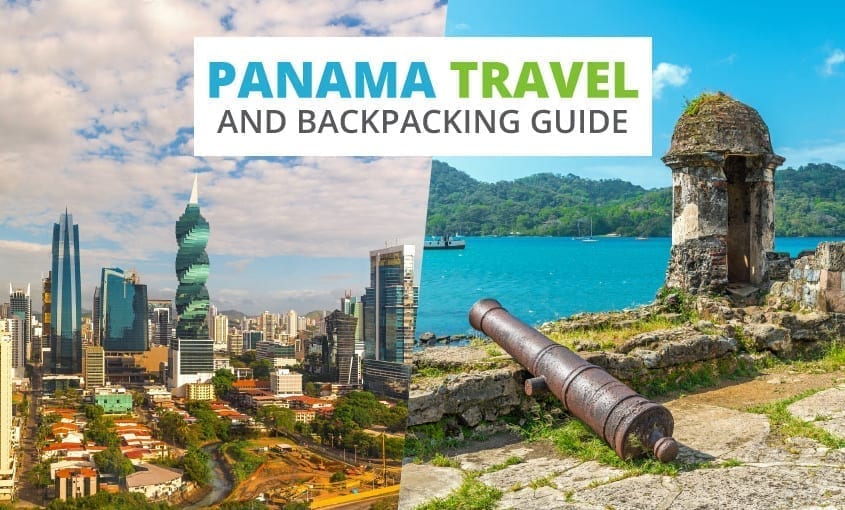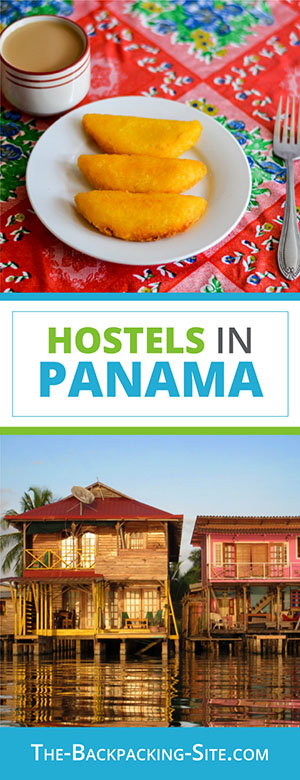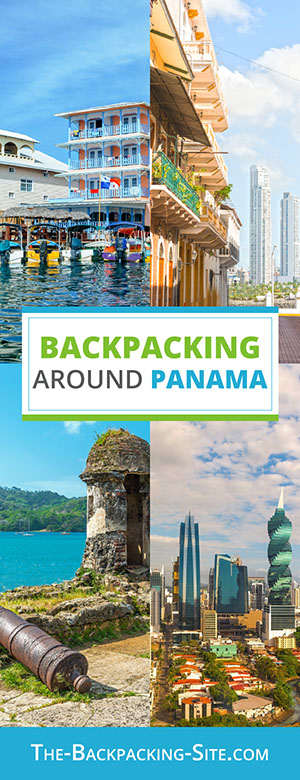
Backpacking Panama
Looking for important travel information while backpacking in Panama? Here you will find information on working in Panama, entry visas, Panama hostels, and much more.
Table of Contents
- Facts About Panama
- Things to do in Panama
- Entry Visa Requirements for Panama
- Foreigner Work Permits and Backpacker Jobs in Panama
- Official Language of Panama
- Panama Hostels
Facts About Panama
The Southernmost country on the Central American isthmus, Panama has always had a vibrant, multi-faceted culture. Since the construction of the Panama Canal, it has also been an industrially significant country with economic clout and booming tourist industry.
From Caribbean beaches to Pacific breaks, hiking adventures to spa hotels, Panama’s got something for everyone, which explains why it has become such a popular destination for backpackers and package tourists alike in recent years.
Climate in Panama
When deciding the best time to visit Panama, weather plays an important role. Panama stretches from the Caribbean coast down to South America, and as you might expect its climate is hot and tropical.
The dry season runs roughly from December to April and is the best time to visit, though temperatures can soar to uncomfortable heights in places. During the rainy season, though, it can really pour with rain, and mountainous regions can get much colder than the humid lowlands.
Temperatures do not vary too greatly year-round, with Panama City’s temperature tending to fall in the mid-to-late 20o during any given month. The BBC weather website has a comprehensive and often accurate five-day forecast for Panama though you will need to search more widely to find more specific local breakdowns.
Things to do in Panama
Travellers to Panama will encounter a curious mix of American surfers on ‘Spring Break’, earnest bird-watching ecologists, retired couples and gap-year students, as well as the backpackers, families and even a Panamanian or two.
Surfing in Panama
The surfing is justifiably famous, with the most skilful and daring heading to excellent breaks off the rugged Pacific coastline. The coast is also home to acre upon acre of American timeshares and golf-courses, which is unfortunate or exciting depending on your holidaying preferences.
Action Sports in Panama
Tours involving active sports also draw travellers. River rafting, boating, waterskiing and especially diving and snorkelling are available across the country. Snorkelling in the Caribbean coast is a popular option offering as it does an opportunity to see some spectacular underwater flora and fauna.
Nature and Wildlife in Panama
And if it’s flora and fauna you want, Panama is the place to be. The mountains and jungles have extremely high biodiversity, and you might catch a glimpse of exotic creatures, from wildcats to giant spiders. Tours vary from arduous camping expeditions to gentle guided strolls around the national parks. Recent developments have constructed luxurious, eco-friendly cabins and tree houses with spas inside the national parks for a bit of post-hike relaxation.
Ancient Ruins
The remains of Indo-American civilizations have always brought travellers to Panama, and though not as famous as the remains in Mexico and Costa Rica, evidence of ancient civilizations is scattered across Panama. See the architectural remains of the Cuevas and the Cocl civilizations everywhere from the remotest of mountains to Panama City itself.
Local Markets
The capital’s malls and markets sell everything: fruit and vegetables, knock-off designer clothing, genuine designer clothing, native arts and crafts, local food and music.
Visiting the Panama Canal
Panama’s most famous feature is not just for engineering buffs. Many travellers walk or cycle or boat along the Canal, and a trip to Panama just isn’t valid unless you’ve at least seen it, and maybe bought the t-shirt.
Unique Activities in Panama
Another good way to get an idea of things to do in Panama is to scan the activities offered by Get Your Guide or Viator. They work directly with local tour operators, so you won’t have to scour the internet or roam around town trying to find the best deal.
How to Travel Around Panama
Although it is possible to travel to Panama by sea, this is a lengthy and often expensive option, most of the traffic comes from the pleasure-boat industry and from trading ships rather than independent travellers. Most people arrive in Panama by air or over land.
It is possible to fly to Panama indirectly from the UK, changing in Europe, the USA or Latin America (or all three).
If you’re flying to Panama, we recommend using a few different flight comparison search engines. Kiwi is a new favourite among travellers. On average, we have found the cheapest flights to Panama with them compared to the other websites out there.
Of course, it is always worth checking Skyscanner to guarantee you’re getting the best deal. Both websites offer great flexible search options, allowing you to see prices for a full month if you’re flexible on travel dates.
Bus travel in Panama
Overland from Costa Rica or Colombia, the bus is your best bet. Buses to and from the border are reliable and surprisingly frequent from across Costa Rica and Colombia, it should be fairly easy to find a connection by checking at the bus station in any town.
Panama is a small, thin worm of a country compared to some of its Latin American neighbours, so it is easy to travel around the country on public transport. And like most of its Latin American neighbours, the bus is usually the most comprehensive and most frequent public transport system.
Buses are reliable and mostly safe, though the comfort factor can be quite erratic, with air-conditioned coaches showing American DVDs and overheated, overcrowded minivans running the same routes.
Taxis in Panama
Taxis are cheap in Panama and can often be a convenient, economical alternative to car hire, particularly given the less-than-desirable state of provincial roads. However, if you want a bit more freedom, then you can find car hire at www.car-hire-centre.co.uk.
Water Taxis in Panama
In parts of Panama, it’s quickest and cheapest (and most fun) to get around by boat. Of course, this is particularly the case with the off-shore islands. It’s usually possible to find a ‘water taxi’, that is, anyone with a boat who’ll take a few coins to take you where you want to go. As always, be careful of who you get into a vehicle with.
Backpacking Tours in Panama
Though part of the fun of backpacking Panama is exploring on your own, there are situations, especially when venturing off the tourist trail, when it does make sense to go with a guide or a small group. For these times, a popular option among backpackers is G Adventures. They hand-select local guides to ensure authenticity and quality. This is especially a good option for those travelling Panama alone who would like to meet up with like-minded travellers. Their most popular trips in Panama are their 8-day Best of Panama tour, or their 14-day Panama Experience which also includes time in Costa Rica
Health and Safety in Panama
UK residents can apply for a comprehensive, up-to-date report on health issues for travellers in Panama. The personal report, which includes recommended vaccinations, foreign office travel health advice, advice on seasonal diseases and up-to-date health news, is available from the Medical Advisory Services for Travel Abroad (MASTA). The MASTA website also has details of locations of travel clinics to visit before you leave.
Broadly speaking, Panama is a fairly safe country to travel to health-wise, so long as you don’t take any foolish risks. Make sure you are vaccinated before you travel and carry a certificate of vaccinations with you. Current UK advice counsels Hepatitis A, Typhoid and Yellow Fever vaccinations for all travellers, as well as a number of others including Rabies for travellers who will be visiting at-risk areas or living long-term in Panama or Latin America. Check with your doctor for up-to-date advice.
Similarly, medical care in Panama is generally of a good standard. Clinics in Panama City are high-quality and will usually have at least one English-speaking doctor on hand. Outside the city, facilities are fewer and further between, and it’s probably best to travel back to the capital for any non-emergency treatment.
However, it is not normally necessary to shell out on any premium-level insurance packages. The type of cover you choose will depend on your planned activities. Speak to an agent mentioning the areas you plan to visit and what you plan to do there, and they will be able to advise you on the best cover.
Entry Visa Requirements for Panama
Travellers are officially required to give proof of onward travel on entry into Panama, that is, whether you are arriving into the airport or over land, you will need to be able to prove you have a ticket to leave the country. On entry into the country, you will be given a 30-day stamp on your passport, which stay can be extended at immigration offices in one of Panama’s large cities.
UK citizens currently only need a valid passport in order to gain entry to the country, though citizens of the USA, Australia and elsewhere will have to purchase a tourist card from border control. The card should be under $10 USD, but ensure you have cash on you before you depart, particularly if you are making an overland entry. Citizens of some other countries will need to apply for a visa before entry into Panama.
However, the particularities of these entry requirements and the countries they apply to have been known to change, so it’s best to contact the Panamanian Embassy well before you travel in order to ensure that you have your papers in order. The British Panamanian Embassy can be contacted from anywhere via their website. Contact details for the Panamanian diplomatic missions around the world can also be found here.
Foreigner Work Permits and Backpacker Jobs in Panama
The Panamanian government has traditionally tried to minimise native poverty by tough immigration laws which make it hard for foreigners to find work in Panama. This freeze on foreign employment is thawing to a certain degree, and foreign students and travellers can find casual, short-term or part-time work as deck-hands and baggage handlers, farm labourers and bar workers. However, it is vital that young foreign workers respect the needs of local labourers as well as legal restrictions when job-searching.
Teaching English in Panama
The other option for the non-skilled or casual (English-speaking) worker in Panama is to teach English, either through a language school in the city or offering independent tutorials.
Volunteering in Panama
Although serious restrictions exist on paid work, a great number of foreign gap-year students and travellers commit to unpaid voluntary work in Panama, which can be rewarding in that it is educational, fun, and a great way to really get into local cultures. They vary wildly, from wildlife conservation projects such as Ancon to government-run internships to English teaching or sports coaching in remote villages. Check charity and government websites for information on current projects.
Official Language of Panama
Spanish is the official language of Panama, however, this apparently simple statement belies a complex linguistic labyrinth that every traveller will have to negotiate to a greater or lesser degree. Nearly 20 languages have been identified as in use in Panama today, with dialectic differences complicating things further.
The majority of these are the languages of native Indo-American tribes, which are in turn mixed with Chinese, French, English and even Arabic in various creoles. The multi-linguistic identy is due in part to the number of immigrants brought in to work on the construction of the Panama Canal over the last century.
However, those who are not multi-lingual need not despair. Working knowledge of Spanish will be more than enough to get around Panama, and the fact that so many different languages co-exist, for the most part happily, means locals will often be open to translating your clumsy assaults on the local language.
Panamanian Spanish differs in a number of minor but not insignificant ways from European Spanish. It is worth investing in a Latin American Spanish guidebook in order to learn about the different forms, particularly as it is possible (though unlikely) that you may encounter some confusion or even hostility if speaking with textbook inflexions.
Panama Hostels & Budget Accommodation

Although there are limited property-rentals and package tours available, most backpackers in Panama will find themselves staying in a hostel or guesthouse as the cheapest and often most sociable accommodation. We have had good experiences finding hostels on HostelWorld. They have the largest inventory of hostels worldwide, and with over 10 million reviews and ratings from other travellers, you know exactly what to expect.
Another good way to find accommodation in Panama is by checking hotels.com and booking.com. With both sites, you’ll not only find hotels, but also homestays, hostels, and other unique accommodation. We have discovered some great finds and have appreciated the ability to book ahead.
You can use their advanced filtering to narrow your results by budget, location score, overall review score, and amenities. Many of the places on booking.com also offer free cancellation, which takes the pressure off the planning phase of your trip.
In provincial Panama, it is not unlikely you’ll find yourself in a place where there’s no official ‘tourist accommodation’ option, and even in the city, there’s often a very fine line between a family-run guesthouse and staying in a family’s spare room.
This tends to be a positive thing as with a little asking-around you can often find cheap accommodation with a friendly host, although the practice is dying out as tourism grows and the spread of official hostels, and of course, international hotel chains, continues.
It is rarely necessary to pre-book a hostel or hotel in Panama, though many have websites and it can be reassuring to do so for your first nights in a town. When visiting for feast days and carnival this is also advisable.
Useful links for Backpacking in Panama
- Visit Panama – Official tourism website for Panama
- Kiwi, Skyscanner, and Opodo – Flight comparison search engines to find the cheapest flights to Panama and within the country
- GetYourGuide and Viator – a collection of things to do in Panama. Also offers Skip the Line tickets for crowded attractions
- Tiqets – Website selling entrance tickets and skip the line tickets for major attractions in Panama
- G Adventures – guided small group tours, great for solo travellers in Panama or for those interested in a more adventurous trip which would require a guide
- HostelWorld – #1 hostel search website to find a hostel in Panama. Thousands of hostels and millions of reviews from fellow travellers
- Booking.com – commonly used booking site. Hostels, hotels, and other unique accommodation with advanced filtering and millions of reviews
- Travel Insurance – read our comprehensive overview of Travel Insurance and some recommended providers for backpacking Panama
There you have it, the ultimate Panama backpacking guide. We hope you have found all the information you need for backpacking around Panama.
Next up:
Liked this article? Share it with others who might be after the same information!


Leave a Reply
Want to join the discussion?Feel free to contribute!